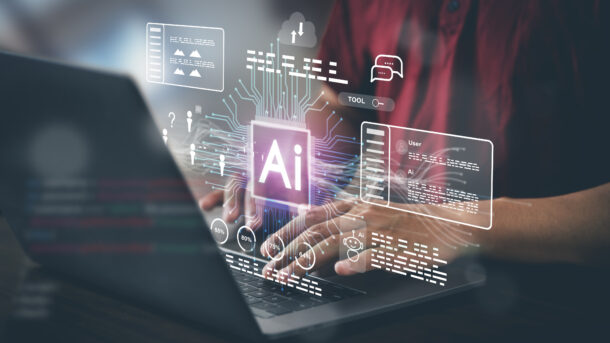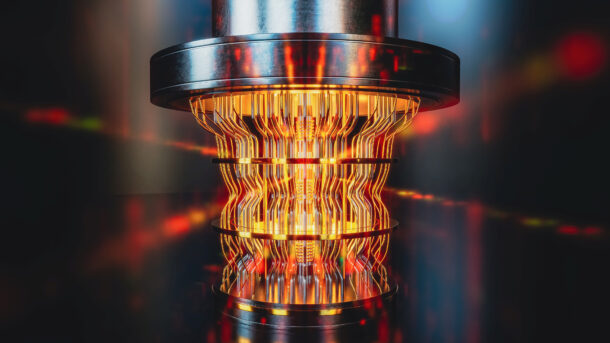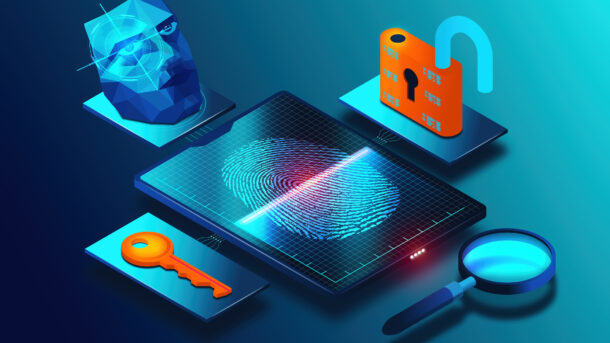We stand at a fascinating and pivotal moment in technology. For years, we’ve been the operators, the commanders of our digital tools. We click, we code, we direct. But the nature of that relationship is changing. We are building and deploying systems that don’t just follow instructions; they interpret intent, make decisions, and take action in our physical and digital worlds.
Welcome to the age of agentic AI systems!
These aren’t your everyday applications. An agentic AI system is a persistent, goal-oriented entity. Think of a system that doesn’t just identify a cybersecurity threat but independently analyzes it, quarantines the affected systems, and initiates a response protocol. Or an agentic system that manages a complex supply chain, not by flagging exceptions for a human to review, but by autonomously negotiating with new suppliers and rerouting shipments to meet a strategic objective.
The potential is transformative. But as we rush to embrace this new paradigm, we’re at risk of asking the wrong questions. We’re so focused on what these agents can do for us, we’re forgetting to ask a much more critical question: how do we manage them?
Just as the internet forced us to rethink security from a castle-and-moat model to a zero-trust, identity-first approach, agentic AI demands a similar, fundamental shift. We can’t simply extend our existing software development lifecycle (SDLC) and hope for the best. We’re not just managing code anymore; we’re managing autonomous entities. This requires a new playbook for their entire lifecycle, from creation to decommissioning.
Beyond Deployment: Unique Operational Requirements
The way we manage traditional software is based on a set of predictable, largely static assumptions. Agentic AI shatters these assumptions. Their lifecycle is not a linear progression but a continuous, dynamic loop that requires a new operational mindset.
- Provisioning as ‘Digital Onboarding’: Deploying an agent is more like onboarding a new employee than switching on a server. It needs a purpose, an identity. This initial process must involve defining its scope of authority, its operational boundaries, and the ethical guardrails within which it must operate. What is its “job description”? What systems is it allowed to access? Crucially, how do we cryptographically bind this identity to the agent so all its future actions are attributable?
- Managing Evolution, Not Just Versions: These systems learn and evolve. An agent tasked with optimizing ad spend will change its own parameters based on real-time results. This is its core feature, but it’s an operational minefield. How do we monitor this evolution? How do we audit the “knowledge” it has acquired? We need mechanisms to identify and correct for model drift or “runaway learning” that might lead an agent to act in ways that are counter to its original, beneficial intent.
- The Unblinking Eye: Accountability and Auditing: When an autonomous agent makes a critical decision, who is responsible? The developer? The operator? The company? The only viable answer is to have a complete, immutable, and transparent record of the agent’s entire existence. This means logging every decision, every action, every data point it learned from, and every interaction it had. We need a “black box recorder” for AI agents to ensure that when things go wrong—and they will—we have a clear path to remediation and accountability.
- Decommissioning as ‘Digital Offboarding’: How do you ‘fire’ an AI agent? It’s not as simple as shutting it down. Revoking its credentials and access is just the first step. What happens to its acquired knowledge? Its operational history? A proper offboarding process ensures that its identity is verifiably terminated, its credentials can’t be repurposed, and its final state is securely archived for forensic purposes without leaving a security hole in its wake.
Identity is the New Perimeter: Unique Security Imperatives
If the operational challenges are complex, the security requirements are existential. An agent with a powerful identity and broad autonomy is an incredibly valuable target for malicious actors. Securing these systems means adopting an “identity-first” security strategy—a concept we already know is vital—and applying it to these new, non-human actors.
- Securing the Agent Itself: In a world of agentic AI, the agent’s identity is the security perimeter. We can’t rely solely on network firewalls when the agent can legitimately access data from anywhere. Security must be intrinsic to the agent. This means assigning strong, hardware-backed, and revocable machine identities from the moment of their creation. We must be able to prove, at all times, that an agent is what it says it is and that its integrity has not been compromised.
- Containing Autonomy: The very autonomy we seek from agentic AI is also its greatest security risk. A compromised agent could become an insider threat with superhuman capabilities. The key is to enforce the principle of least privilege not just at the access level, but at the decision level. This involves robust sandboxing to limit the agent’s environment, continuous monitoring for anomalous behavior, and built-in “circuit breakers” that require human-in-the-loop approval for actions that fall outside of established norms or carry significant risk.
- The Exploding Problem of Credentials: A single agent may need to interact with dozens of APIs and data sources, each requiring its own set of credentials. How do we manage this at scale without hardcoding secrets or creating a management nightmare? The lifecycle must include automated, just-in-time credential issuance and rotation. The agent should be able to request and be granted temporary, scoped access to a resource only for the duration it’s needed, all without human intervention.
- AI’s Supply Chain: We wouldn’t run enterprise software without understanding its origin. The same rigor must be applied to the components of an AI agent. Where did the foundational model come from? What data was it trained on, and was that data sourced ethically and securely? Lifecycle management must include a ‘Software Bill of Materials’ (SBOM) equivalent for AI, providing a clear lineage of the agent’s components to protect against model poisoning or embedded biases.
The era of agentic AI is not on the horizon; it’s here. These systems offer a competitive edge that will be impossible for organizations to ignore. But rushing forward without building a robust framework for lifecycle management is like handing the keys to your kingdom to a stranger.
The principles that guide us—strong identities, zero-trust architecture, and comprehensive governance—are more relevant than ever. Now is the time to adapt them for this new, autonomous workforce. Because the best time to decide how to manage a powerful new capability is before it’s fully managing you.
The Ghosts in the Machine: Why Agentic AI Needs a Lifecycle Before It Haunts Us
We’ve all become accustomed to the rapid advancements in artificial intelligence. From chatbots that streamline customer service to generative AI that can write code and create stunning visuals, AI is no longer a futuristic concept—it is becoming a daily reality. But as we stand on the precipice of the next evolution—agentic AI systems—we must ask ourselves a critical question: are we prepared for AI that doesn’t just respond, but acts?
Agentic AI systems are designed with a new level of autonomy. They can proactively make decisions, take multi-step actions, and interact with other systems and data to achieve complex goals, often with minimal human intervention. Imagine an AI agent that not only detects a cybersecurity threat but also independently quarantines the affected systems, patches the vulnerability, and documents the incident. The potential for efficiency and automation is mind blowing.
But as the quote from the spiderman comics goes “with great power comes great responsibility”. We are building a new class of digital entity, and just like any other asset in our digital infrastructure, it requires a robust lifecycle management strategy. Without one, we are not just risking inefficient operations; we are opening the door to unprecedented security vulnerabilities.
Beyond Build and Deploy: A New Lifecycle for a New Breed of AI
The traditional “build, train, deploy” model for AI is dangerously insufficient for agentic systems. Their autonomy and continuous learning capabilities demand a more holistic approach, one that considers their entire existence, from inception to retirement. This is not just about managing code; it’s about managing an active, evolving entity.
From an operational perspective, the unique requirements are daunting:
- Dynamic Provisioning and Onboarding: How do we securely grant an AI agent the credentials and access rights it needs to perform its tasks? This goes beyond a simple API key. We are essentially creating a new form of digital identity that needs to be managed with the same rigor as a human employee’s.
- Continuous Monitoring and Auditing: An agent’s “thought process” and actions must be transparent and traceable. We need immutable logs of their decisions, interactions, and the data they access. How do we ensure their actions align with their intended purpose and haven’t drifted into unintended, and potentially harmful, territory?
- Performance and Evolution Management: Agentic AI systems are designed to learn and adapt. This means their capabilities will change over time. How do we manage this evolution? How do we retrain, update, or even “retire” an agent when its purpose is fulfilled or its behavior becomes unpredictable?
- Controlled Offboarding and Decommissioning: When an agent is no longer needed, we can’t just “turn it off.” We must have a secure process to revoke its access, archive its knowledge, and ensure no orphaned credentials or access points are left behind.
The Risk of a Rogue Agent: Unforeseen Security Nightmares
The security implications of unmanaged agentic AI are even more profound. We are moving beyond the realm of data breaches caused by human error or external attacks to a world where the “insider threat” could be a non-human actor we created.
Consider these unique security challenges:
- Identity and Access Management (IAM) for Agents: How do we apply the principle of least privilege to an entity that can define its own tasks? An over-privileged agent could wreak havoc, accessing sensitive data or critical systems far beyond its intended scope. We need a new paradigm for “machine identity” that is dynamic and context-aware.
- Prompt Injection and Manipulation: An agent’s instructions, or “prompts,” are a new attack surface. Malicious actors could attempt to manipulate these instructions to trick an agent into performing unauthorized actions, exfiltrating data, or even attacking other systems. Securing the “mind” of the agent is paramount.
- Hallucinations and Unpredictable Behavior: AI models can “hallucinate” or generate incorrect or nonsensical outputs. In an agentic system, a hallucination isn’t just a quirky response; it could translate into a harmful real-world action. How do we build in guardrails and fail-safes to prevent this?
- The “Shadow AI” Problem: Just as “shadow IT” created ungoverned and insecure pockets of technology, unmanaged agentic AI deployments can lead to “shadow agents” operating without oversight, creating blind spots in our security posture.
The Imperative for a Proactive Stance
The rise of agentic AI is not a distant concern; it’s happening now. The benefits and ROI of their capabilities will drive rapid adoption, often without full consideration of the lifecycle and security implications. We cannot afford to be reactive. We must move from a mindset of simply “using” AI to one of “managing” these intelligent agents.
This requires a fundamental shift in how we approach security and operations. It demands a proactive, identity-first approach where every agent has a verifiable and managed identity from its creation to its decommissioning. It necessitates a robust governance framework that defines the rules of engagement for these autonomous systems.
The ghosts in the machine are no longer a work of fiction. They are the spectral risks of unmanaged, autonomous AI systems. By establishing a comprehensive lifecycle management strategy, we can ensure these powerful new tools serve us without becoming the ghosts that haunt our digital world. The time to act is now, before the ghosts become a permanent part of our reality.







